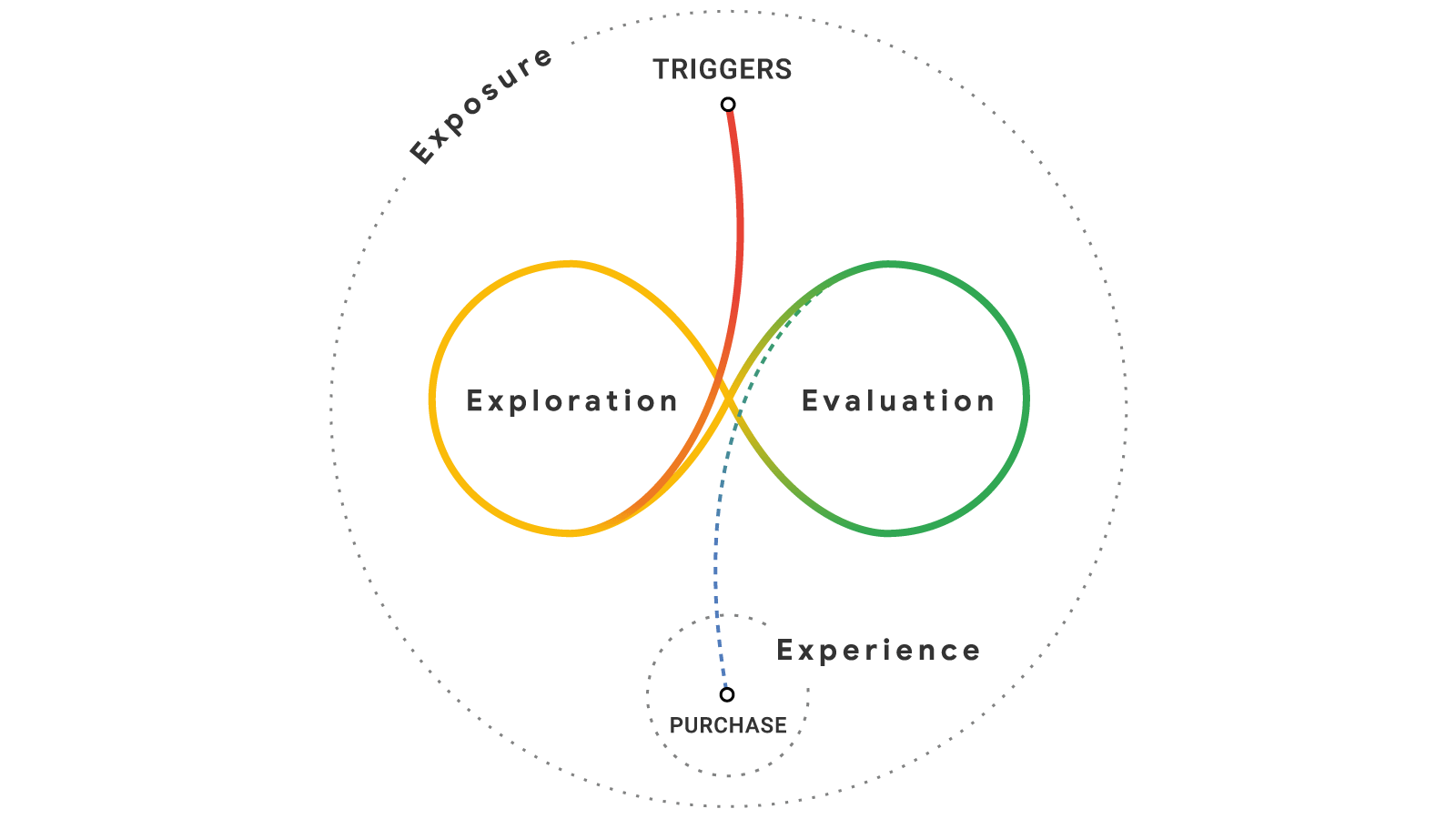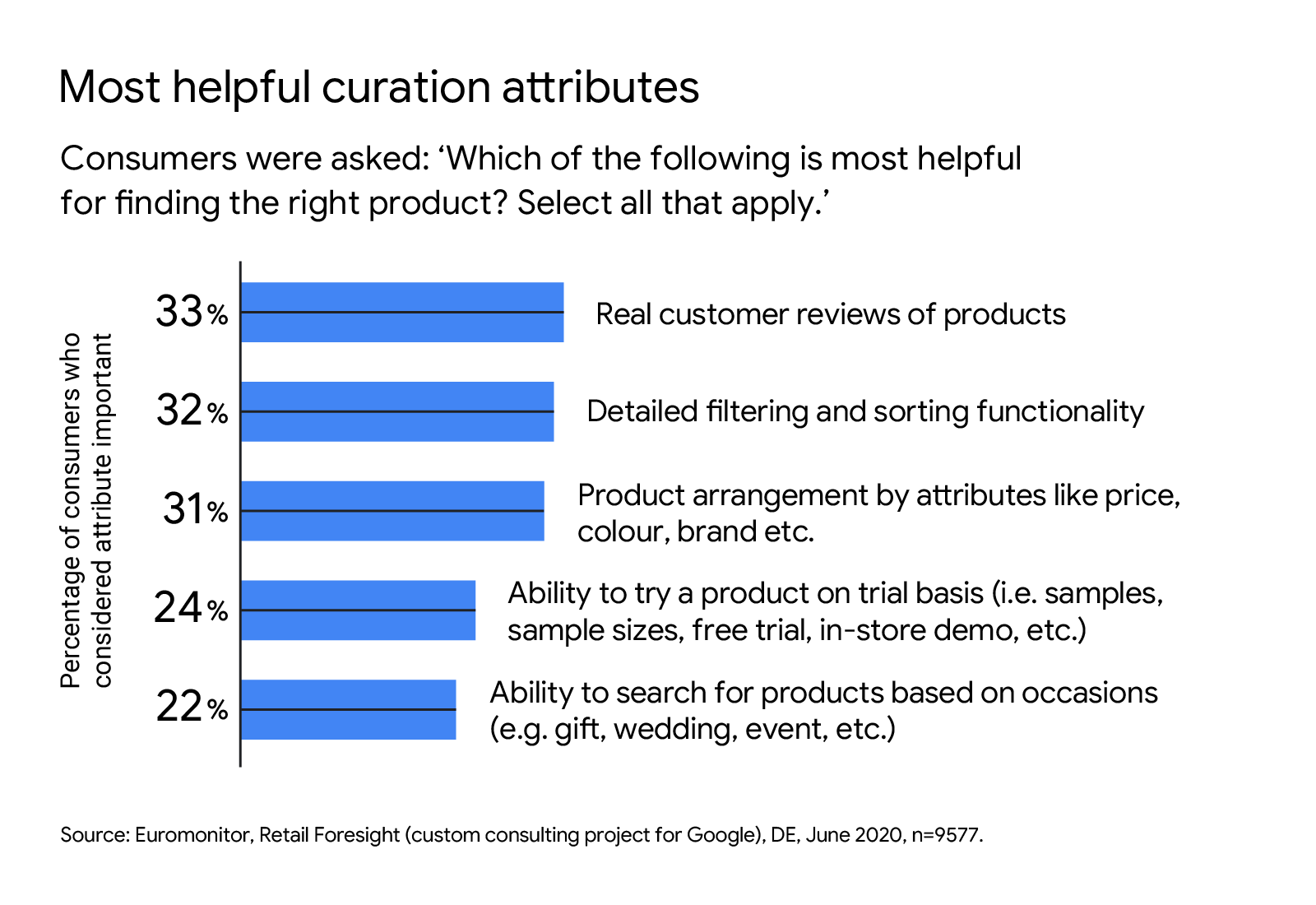Pablo Pérez and Georgie Altman are both experts on marketing insights at Google. Here they share the pros and cons of providing retail customers with curated experiences or choice at scale.
When it comes to online shopping, all retailers face a crucial (and daunting) question: do our customers want endless choice, or do they prefer product curation?
An ‘endless aisle’ of purchase options provides the opportunity to choose from an array of products not typically stocked on shelves. It can empower consumers, but also result in a ‘paradox of choice’, leaving them endlessly browsing and never making a final purchase. At the other end of the spectrum, curation can guide customers to better decisions, but may also leave consumers feeling that they’ve been removed from the decision-making process.
As part of our research on the future of retail, we’ve considered this tension between scale and curation to understand the best options for retailers. The ultimate goal is empowering customers and giving them confidence to hit the ‘buy’ button.
Scale: The ‘endless aisle’ and the paradox of choice
Research from Nielsen suggests that, generally, a large variety of choice is a good thing. It increases the likelihood of satisfying diverse consumers, while also meeting their desire for change and novelty.
However, in some contexts, choice can lead to frustration. For example, making a selection becomes more difficult as the difference between attractive options gets smaller and the amount of available information about them increases. Lack of familiarity with the items in the assortment also increases the likelihood of consumers feeling overwhelmed by choice. However, solving issues like scrolling fatigue or making product comparisons easier can drive 4-7% additional sales.
Our recent ‘Decoding Decisions’ research demonstrates that consumers go through several evaluation-exploration cycles, adding new buying options and then refining them, in order to be confident in their final purchase decision. If the experience is not managed well, consumers can get stuck in this cycle. This could mean the loss of a sale and frustrated consumers.

Choice is more difficult as the difference between attractive options gets smaller
Consumers like to have options, but the paradox of choice, to use the term coined by psychologist Barry Schwartz, is a valid consideration. Ways to help consumers make good choices in the ‘endless aisle’ include:
1. Enabling consumer-relevant filtering
The richer the product information provided, the easier it is for consumers to filter down and find the right product. Use formats such as product data specification to add information on product differentiators such as sizing, colour, or fabric.
2. Showcasing the most in-demand products on the virtual shop window
Use tools such as Rising Retail Categories to inform category management and put sought-after products front and centre for browsing customers to find.
3. Tailoring your approach by product value
Provide more information for higher-value products to make consumers more confident in their purchasing decisions. For example, fabrics used, whether products are organic, or information on ethical or local sourcing. For lower value products, you can provide multiple delivery/pickup options or promo codes to help customers make their final purchase decision.
Curation: The value of personalised recommendations
The other end of the spectrum is providing a high degree of product curation, for instance via subscription boxes or personal styling services. This has increased in popularity in the last year. Research by Euromonitor International reveals that 51% of European consumers said they were seeking curated experiences tailored to their taste. The choice is not either/or. Even services that offer choice at scale should look to provide some level of product curation, for example by making it simpler for consumers to filter products on their own.
When you offer curation options, a key concern is whether they work well. Recommendation algorithms must be effective in selecting products that satisfy consumer needs — and consumers should not feel like they’ve been eliminated from the decision-making process entirely.

How can retailers achieve the right curation balance? Our ‘Decoding Decisions’ research showed us consumers look for guidance from peer reviews and detailed product information. They also want to de-risk their purchase by trying before they buy, and navigate through their journey with better sorting functionality.

To help customers feel satisfied about curated options, consider the following:
1. Don’t remove customers from the decision-making process
Consumers want decision-making to be easy, but they don't want to be removed from that decision entirely. As a retailer, your job is to make the decision easier for them, but to ultimately let them decide. For example, by providing easy return options for at-home styling services or letting them tweak subscription-box options.
2. Provide smarter product recommendations
Technology can help create smarter recommendations for consumers. For instance, Google Cloud’s Recommendations AI draws on machine learning to deliver highly personalised recommendations that suit each customer’s tastes and preferences. By delivering better recommendations, retailers can improve both immediate sales and long-term loyalty.
Finding the right balance between scale and curation
Our research shows the tension between endless virtual aisles and carefully curated product offers is not a binary distinction. Despite the apparent tension between these two approaches, the ultimate goal for both is the same: allow consumers to engage with the product assortment, and to empower them through different means to make good decisions in an increasingly digital-first world. Both ‘endless aisle’ marketplaces that host multiple brands and carefully curated subscription services deliver on consumer empowerment and presentation of choices. And there is an array of options between these ends of the spectrum.
The best way to serve consumer needs varies by retail category, but here are five key considerations:







